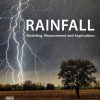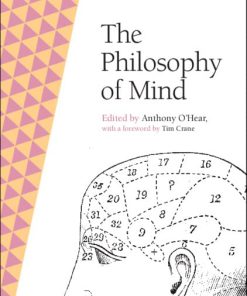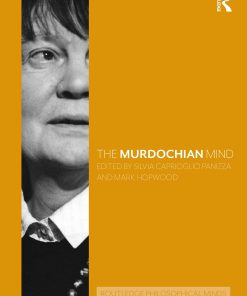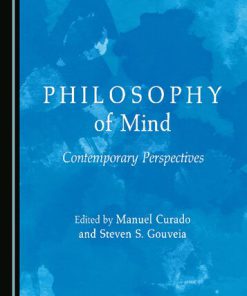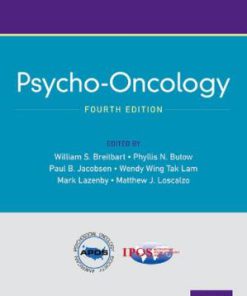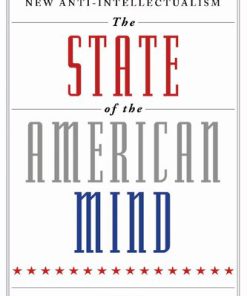The Bergsonian Mind 1st Edition by Mark Sinclair, Yaron Wolf ISBN 9780429665264 0429665261
$50.00 Original price was: $50.00.$25.00Current price is: $25.00.
The Bergsonian Mind 1st Edition by Mark Sinclair, Yaron Wolf – Ebook PDF Instant Download/Delivery: 9780429665264 ,0429665261
Full download The Bergsonian Mind 1st Edition after payment
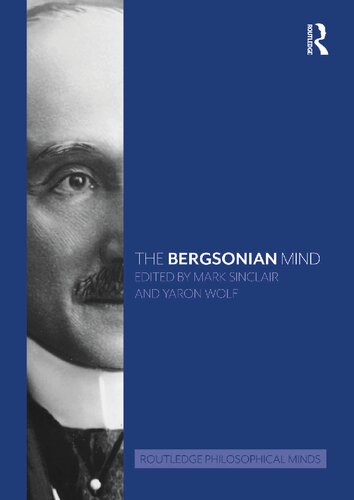
Product details:
ISBN 10: 0429665261
ISBN 13: 9780429665264
Author: Mark Sinclair, Yaron Wolf
The Bergsonian Mind 1st Edition Table of contents:
Part I Sources and scene
1 The roots of Bergson’s concept of duration reconsidered
1.1 Number, space and time in Of Habit
1.2 Delboeuf’s distinction of vulgar and scientific time
1.3 Lemoine and Egger on flowing duration and pure succession
1.4 Conclusion
Notes
Bibliography
2 Bergson vs. Herbert Spencer
2.1 Time and Free Will: space and time, two multiplicities
2.2 A philosophy of becoming vs. a philosophy of being
2.3 A vital knowledge of life (new vitalism)
2.4 Conclusion
Notes
Bibliography
3 Bergson at the Collège de France
3.1 The early years of Bergson’s teaching
3.2 A lack of seats
3.3 The Collège vs. the Sorbonne
3.4 Changing regulations
Notes
References
Part II Mind and world
4 Duration: A fluid concept
Notes
Bibliography
5 Bergson on the immediate experience of time
5.1 Homogeneous multiplicity
5.2 Durée
5.3 Durée as the ‘immediate datum’ of experience
5.4 Bergson’s dual-aspect account of temporal experience
5.5 The priority of Durée
5.6 Conclusion: Durée from the ‘conscious spectator’ to the world at large
Notes
Bibliography
6 The perception of change and self-knowledge: Bergson and Kant
6.1 Bergson’s interpretation of Kant’s theory of time
6.2 Space and time in Kant’s Transcendental Aesthetics
6.3 Time consciousness, self-consciousness, and the act of combination
6.4 Space as an a priori form of experience
6.5 Self-consciousness and knowledge of the external world
6.6 Conclusion
Notes
References
7 The Kantian basis of Bergson’s conception of freedom
7.1 Necessity and freedom
7.2 Resolution of the antinomy of freedom
7.3 The fact of freedom
7.4 The heteronomous will and the parasitic self
7.5 Bridging the immense gulf
Notes
Bibliography
8 Character and personality: From a privileged image of durée to the core of a new metaphysics
8.1 Preliminary considerations
8.1.1 The images of personality
8.1.2 The logic of expression in Bergson’s notion of personality
8.2 Personality as the privileged image of duration
8.3 The theory of personality as metaphysics
8.4 Conclusion
Notes
Bibliography
9 Subject and person in Bergson
Bibliography
10 Attention to life and psychopathology
10.1 Normal psychology
10.2 From the normal to the pathological
10.3 Conclusion
Notes
Bibliography
11 Bergson on the emotions
11.1 James on the emotions
11.2 Bergson on the emotions in Time and Free Will
11.3 Bergson on aesthetic and moral feelings
11.4 Bergson on creative emotion and the open soul
11.5 Conclusion
Notes
Bibliography
12 Bergson’s social philosophy of laughter
12.1 Laughter in the history of philosophy
12.2 Rigidity as the source of the comic
12.3 The social meaning of laughter
12.4 Conclusion
Note
References
13 The naïve realism of Henri Bergson
13.1 Isms and images
13.2 Perception and consciousness
13.3 Perception and content
13.4 Affection and attention
13.5 Conclusion
Notes
References
14 Bergson and metaphysical empiricism
14.1 A world of pure experience
14.2 Human experience and nature
14.3 Experience beyond action
14.4 French philosophies of radical experiences
Notes
Bibliography
15 The psychological interpretation of life
15.1 The image
15.2 The psychology of effort
15.3 Élan vital as image for effort
15.3.1
15.3.2
15.3.3
15.4 Conclusion
Notes
Bibliography
16 Bergson on virtuality and possibility
16.1 Virtuality3
16.1.1 The concept of virtuality in Deleuze’s Bergsonism
16.1.2 The concept of virtuality in Bergson
16.1.2.1 The virtuality of action
16.1.2.2 The virtuality of memory
16.1.3 The merit and limit of the Deleuzian interpretation
16.2 Possibility
16.2.1 Freedom, unpredictability, and retrospective explicability
16.2.2 Tracing the formation of the critique
16.2.3 The structure of the illusion of possibility
16.2.4 Justification for the critique
16.3 Conclusion
Notes
Bibliography
17 Bergsonian metaphysics: Virtuality, possibility, and creativity
17.1 The actual/virtual distinction and the real/possible distinction
17.2 The implications for metaphysics
Notes
Bibliography
18 Reflections on the notion of system in Creative Evolution
18.1 Naturally, artificially and relatively closed systems
18.2 Philosophical systems
18.3 Bergsonian intuition and the articulations of the real
18.4 Conclusion
Notes
Bibliography
19 Infinite divisibility vs. absolute indivisibility: What separates Einstein and Bergson
19.1 Einstein
19.2 Bergson
19.3 Indefinitely or infinitely?
19.4 Two thinkers, two world views, two methodologies
Notes
References
Part III Ethics and politics
20 Closed and open societies
20.1 Definition of the closed society
20.2 The closed society and the problem of war
20.3 The source of closed and open societies
20.4 The problematic definition of the open society
20.5 Openness, love, creation
20.6 Mysticism, education, and society
Notes
Bibliography
21 Bergson on emotion and ethical mobilization
21.1 Motion and emotion
21.2 From “static” to “dynamic’’: the impulse of the Jewish prophets
21.3 In the heat of the action: ethical propagation
22 Bergson and sociobiology
22.1 The sociobiology of laughter
22.2 Living and living well
Bibliography
23 The phantom presence of war in Bergson’s Two Sources
23.1 Bergson in 1914–18: a philosopher at war
23.2 Bergsonism in the aftermath of the First World War
23.3 1932: The Two Sources of Morality and Religion
23.3.1 The ambiguous status of war in the Two Sources
23.3.2 The concept of mythmaking function and its relation to the experience of war
23.4 Conclusion
Notes
Bibliography
Part IV Reception
24 Bergson and William James
24.1
24.2
24.3
24.4
Notes
Bibliography
25 Bergson and German philosophy
25.1 Bergson and Jena: a European anti-intellectualist wave
25.2 Berlin: an a-tragic philosophy of life
25.3 Heidelberg: between historicism and naturalism
25.4 Göttingen: immediate intuition and critique of mechanical civilization
25.5 The war and national philosophical identity
Notes
Bibliography
26 The vital impulse and early 20th-century biology
26.1 “Only an image”
26.2 Life as an impulse
26.2.1 An alternative to the finalist/mechanist (false) dichotomy
26.2.2 The vital impulse and the four theories of evolution
26.2.3 The impulse and the meaning of human evolution
26.3 Bergsonian biologists
26.3.1 Creative Evolution and the historiography of biology
26.3.2 The vitalism/mechanism debate
26.3.3 Early 20th-century evolutionism
26.4 Conclusion
Notes
Bibliography
27 From time to temporality: Heidegger’s critique of Bergson
27.1 Bergson in Being and Time
27.2 Heidegger’s debt to Bergson
Notes
References
28 Russell reading Bergson
28.1 Russell’s encounter with Bergson
28.2 “The Professor’s Guide to Laughter”
28.3 Russell’s 1912 critique of Bergson
28.4 Carr’s reply and Russell’s response
28.5 Costelloe-Stephen’s reply
28.6 Russell rereads Bergson
28.7 Conclusion
Notes
References
29 The concept of substitution in Bergson and Lévinas
29.1 Ethics as first philosophy
29.2 Lévinas and Bergson
29.3 Substitution
29.4 Conclusion
Notes
Bibliography
30 The way of the Africans: Césaire, Senghor and Bergson’s philosophy
30.1 Négritude and Bergsonism as philosophies of life
30.2 Négritude and Bergsonism on vital knowledge
30.3 Négritude and Bergsonism on creative emotion
Notes
Bibliography
Part V Bergson and contemporary thought
31 Irreducibility, indivisibility, and interpenetration
31.1 Unity
31.2 The irreducible
31.3 Temporality
31.4 Bergson and temporal experience
31.5 Interpenetration
31.6 From unity to interdependence
Notes
Bibliography
32 A Bergsonian response to McTaggart’s paradox
32.1 McTaggart’s paradox in three claims
32.2 La durée, memory and time
32.3 A Bergsonian response to the paradox
32.4 Bergson and the A-series
32.5 Conclusion
Notes
Bibliography
33 Bergson and process philosophy of biology
33.1 ‘Process’ in contemporary philosophy of biology
33.2 ‘Process’ reconsidered: Bergson
33.3 Conclusions
Acknowledgements
Notes
References
34 Bergson as visionary in evolutionary biology
34.1 The reception of Creative Evolution
34.2 Elan vital as a fluid concept
34.3 The relevance of Bergson’s critique to contemporary biology
34.4 The evocative power of the élan vital today
34.5 Conclusion
Notes
Bibliography
35 ‘Living pictures’: Bergson, cinema, and film-philosophy
35.1 The cinematographic illusion and the cinematographic mechanism of thought
35.2 The cave and the cinema
35.3 The circle and the centre
35.4 Phantoms of ideas and phantoms of problems
35.5 Movement images and duration images
35.6 Coda: out of sight?
Notes
Bibliography
36 Anti-intellectualism: Bergson and contemporary encounters
36.1 Bergsonian intuition
36.2 For and against irrationalism
36.3 Contemporary anti-intellectualism and irrationalism
36.4 Bergsonian conceptual intuition?
Notes
References
Index
People also search for The Bergsonian Mind 1st Edition:
bergsonian theories of consciousness
bergsonian philosophy
bergson mind at large
the bergson reviews
dr berg mind
Tags:
Mark Sinclair,Yaron Wolf,Bergsonian Mind
You may also like…
Politics & Philosophy - Major Branches of Philosophical Study
The Philosophy of Mind Talking Philosophy Anthony O’Hear (Editor)
Religion & Spirituality - Christianity
The Christian Theological Tradition 4th Edition Mark Mcinroy Editor Michael J Hollerich Editor
Medicine - Oncology
Uncategorized
The Emergence of the Modern Mind 1st Edition by Frederick C Gruber ISBN 9781512802139 1512802131


